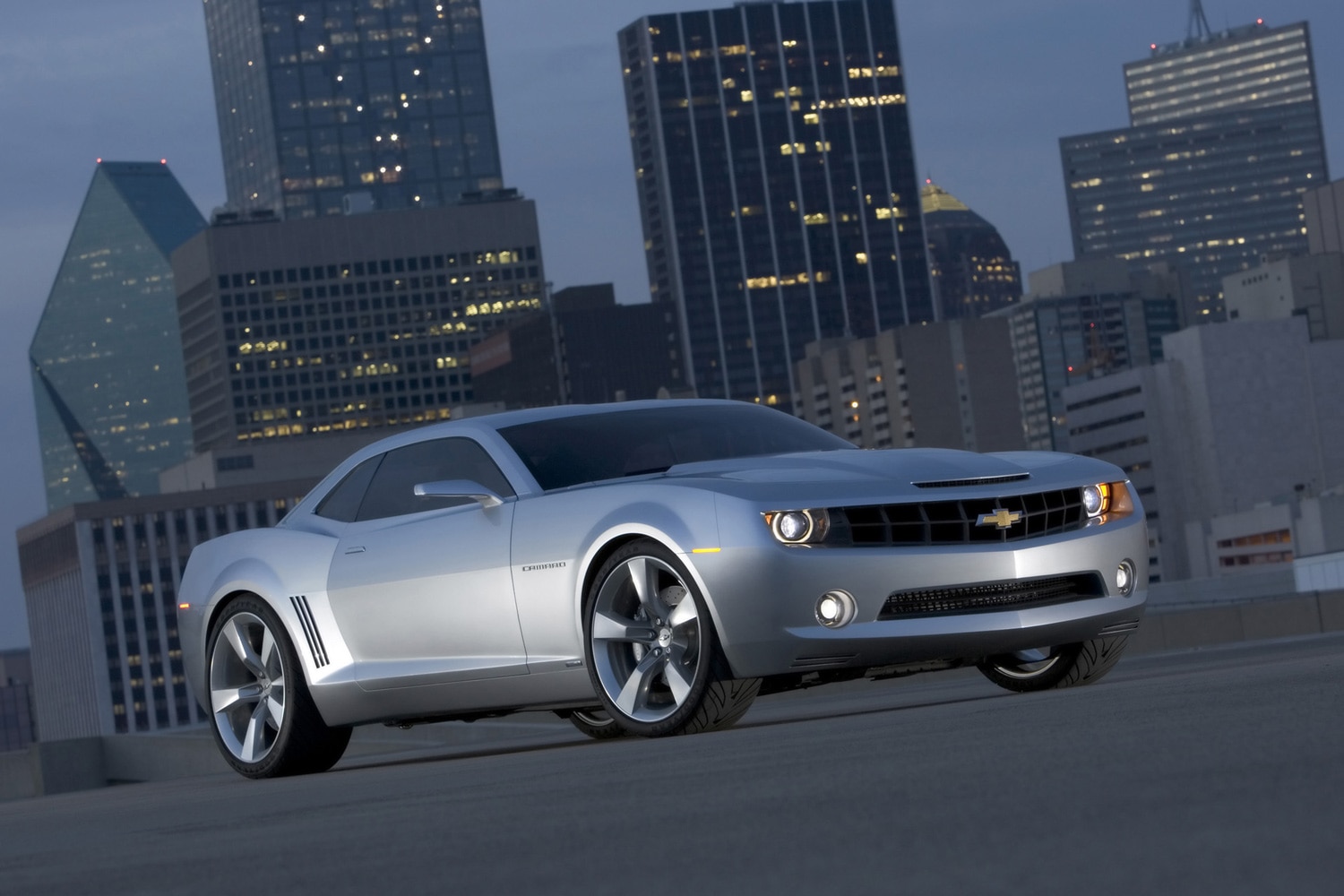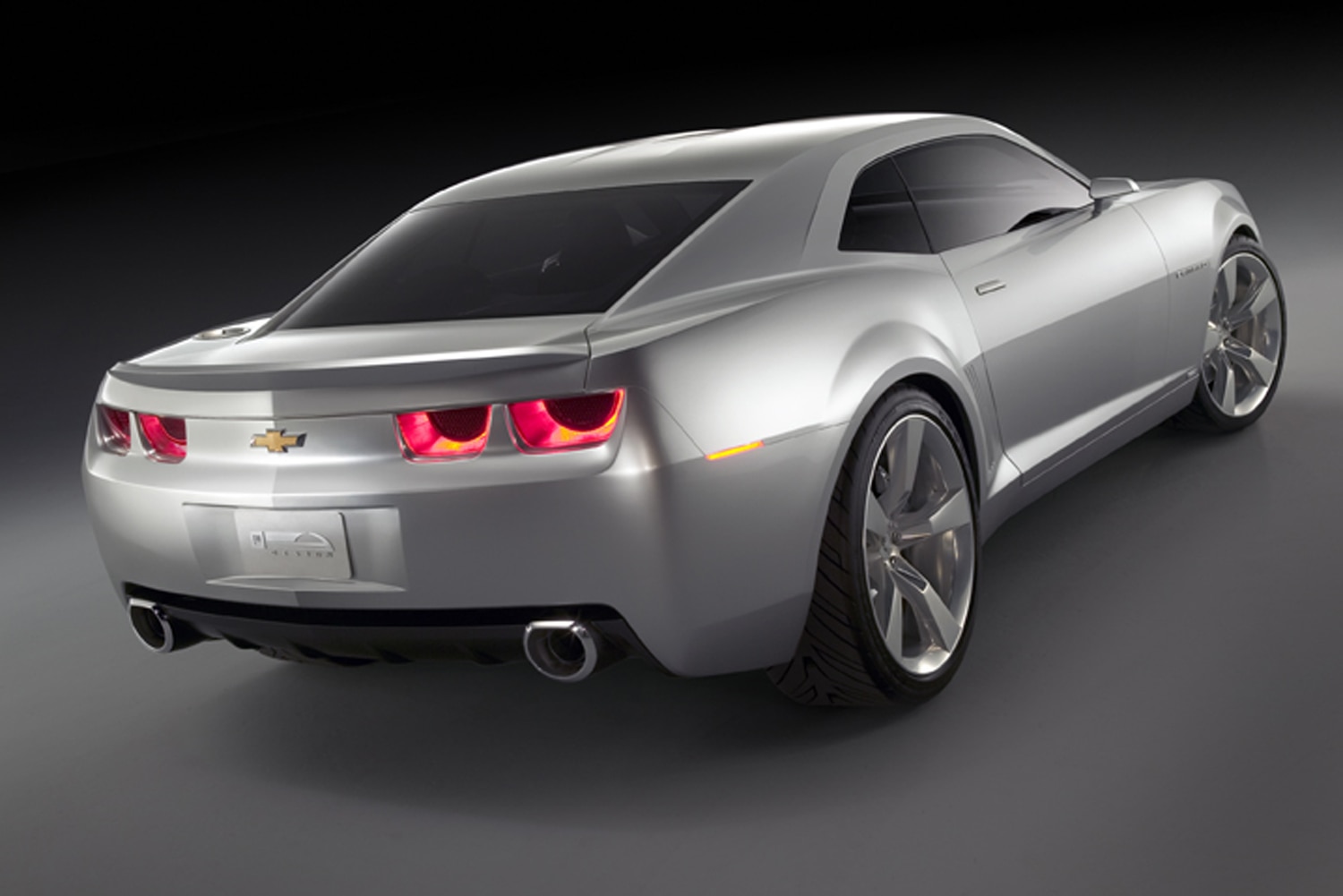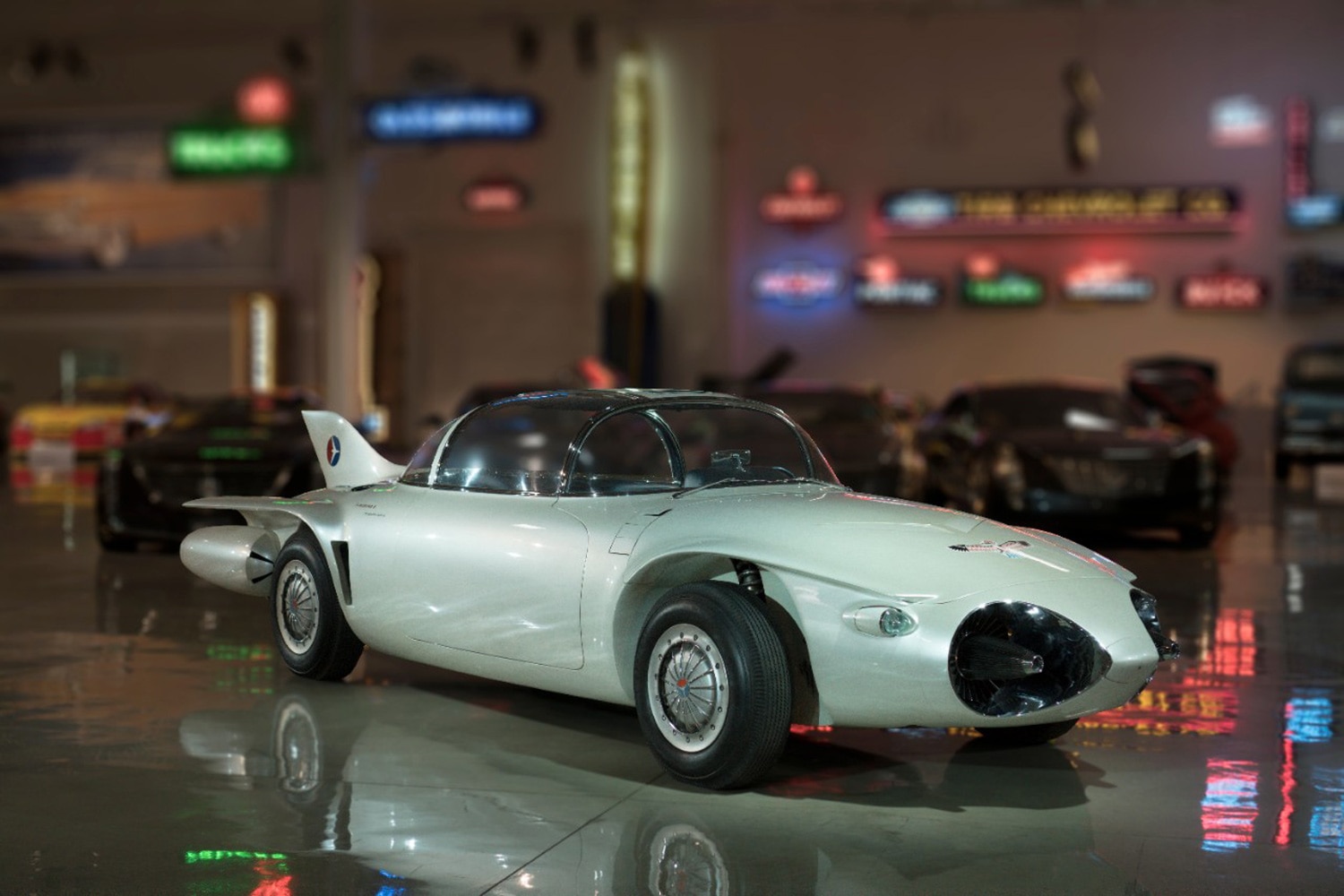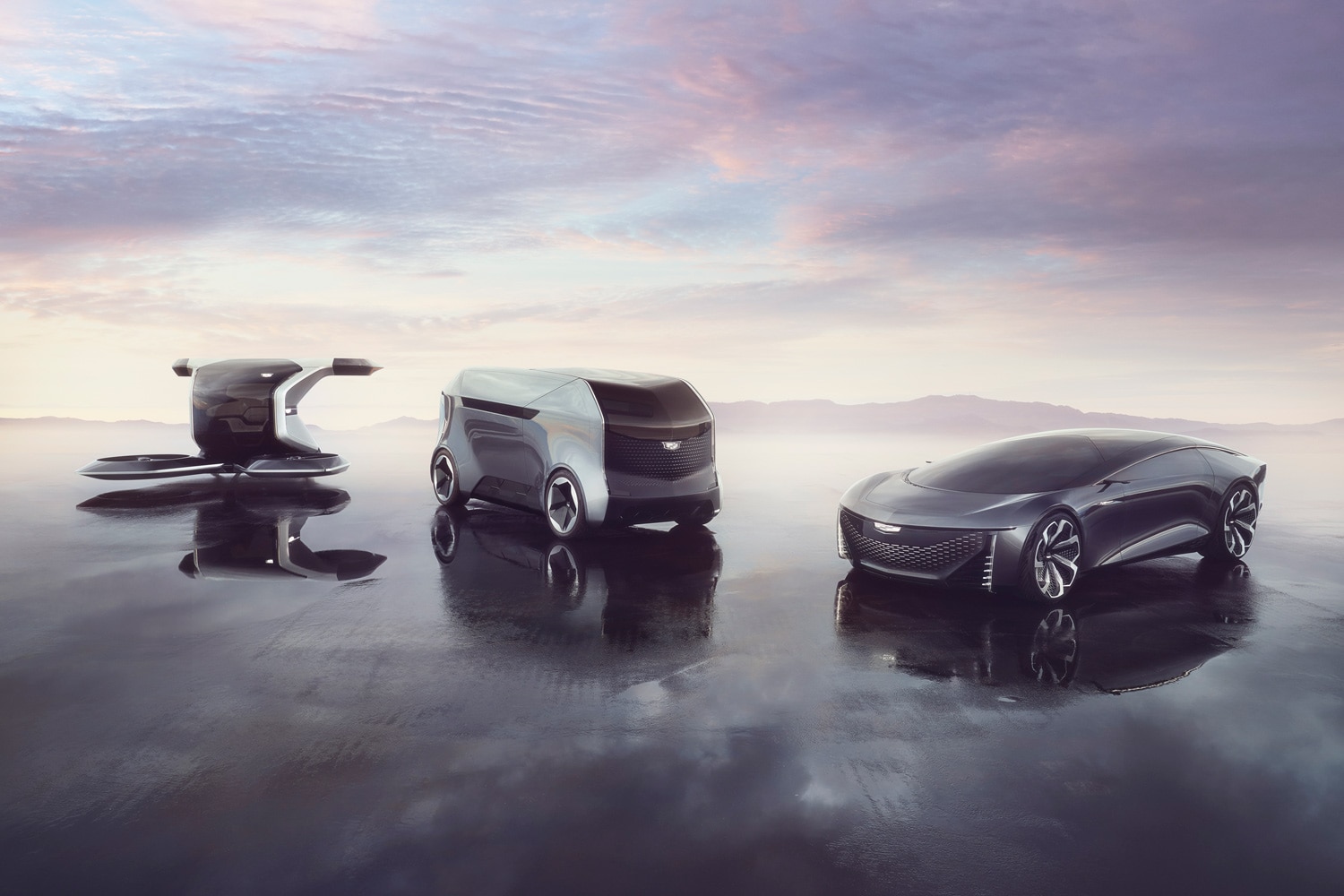Why Do Concept Cars Matter?
Far from just flights of fancy, the oft outlandish and far-reaching concept vehicles cooked up by design studios have been spurring innovation for almost a century.
 Chevrolet
Chevrolet
Article QuickTakes:
Concept cars, in their purest form, are automotive fantasies, singular signifiers of an evanescent future that is always coming, but never arrives. They have been a mainstay of auto shows and events for nearly 100 years, at least since the swoopy one-off Auburn Cabin Speedster was revealed at the Los Angeles Auto Show in the winter of 1929. Concept cars are intended to act as harbingers in the auto industry, so it should come as no surprise that soon after this Auburn was unveiled, a fire consumed the tent it was housed in, as well as more than 300 other vehicles on display. Just months later, the Great Depression arrived, decimating the auto industry.
At their most elemental, concept cars are advanced glimpses at an automobile company's potential product offerings, a sort of peek behind the curtain at — and a testing of consumer response to — a vehicle that could very well go into production.
 Chevrolet
Chevrolet
2006 Chevrolet Camaro Concept - A Case Study
"The first one that comes to mind is the 2006 Camaro concept," says Ed Welburn, the vice president for global design at General Motors from 2003 to 2016, when asked for an example of a concept car that closely predicted a future product. "I had observed that first-generation Camaros were doing very well at car auctions, they were very popular — I had one myself; still do. And I thought, Camaro is out of production, let's develop a concept vehicle inspired by that first-gen car."
Consumer response was strong — aided by the fact that the show car also premiered in the first Michael Bay Transformers movie as the star Bumblebee.
"It was such a hit in both regards that the decision was made to go into production with it," Welburn says. "And the production vehicle was very close to the original concept."
 General Motors
General Motors
Concept Cars Preview New Technology
But previewing models that will eventually go into production is only the most basic function of these vehicles. Concept cars can act as rolling test beds for experimental technologies, be they driver assistance systems, onboard navigation or entertainment, or new powertrains. These don't always work out right away. GM showed a "self-driving" concept, the Firebird II, in the mid-'50s, a feature that still has yet to be perfected. Around the same time, Ford showed a nuclear-powered car, while Chrysler and others experimented with jet turbine-powered vehicles in the '60s — both dead ends.
Even these failures can provide a stake in the ground for consideration of other options. "You can almost run a parallel between it and the fashion world," Welburn says. "What you see on the runway is a bit more extreme than what's going to be on the racks, even in the most exclusive stores."
In fact, these experiments can often yield unpredictable results or findings that are applicable beyond their initial realm.
"I think the most advanced concepts that I ever worked on would have been a couple of hydrogen concepts, the AUTOnomy and the Hy Wire," Welburn says. "I think their time certainly hasn't come yet. But things like the skateboard chassis that it had? Everyone talks about skateboard chassis now with electric vehicles."
The term refers to the flat substructure that houses large battery packs on EVs.
"I'm going to go ahead and say that our team coined the term skateboard chassis with that hydrogen vehicle, with that concept. We're nowhere near a hydrogen society now, but technology that was in that concept — the concept of a skateboard chassis and being able to put whatever body you like on top of that chassis — was something that was very sound, and may really appear on future electric vehicles."
 Cadillac
Cadillac
Pushing the design envelope
Beyond technology, concept cars can also provide a space for designers to explore and investigate new themes and ideas. Welburn spoke fondly about the Cadillac Sixteen, a rakish, 13.6-liter V16-powered 2003 concept he worked on that was never green-lit. "But that car had such an influence on the whole next generation of Cadillacs," he said. "You see bits of that car throughout the exteriors in particular — the front-end design, the form vocabulary, the surface execution, the wheel designs. And I think the emotion of that car had an influence on the entire Cadillac organization, not just design."
In addition, concept cars can act as infill, a means to draw renewed attention to a brand that may be dormant or undergoing a period when it is in an innovation gap, and/or not releasing production-ready vehicles.
"You've got a cadence of production introductions, and if there's a lull period, a concept vehicle can fill that void," Welburn says. But this comes with a caveat. "You never want a concept car introduction to upstage a production car introduction. You would certainly rather have stories written about a production vehicle, something you intend to sell. It should take priority, public-facing." Moreover, he adds, a concept should never exist simply to exist. It should have substance. "It should be something more than a shiny object. It should be something that has a message or helps to build the brand in some way."
 Cadillac
Cadillac
Concept Vehicles Behind the Scenes
Providing additional behind-the-scenes insight, Welburn said that the creation of concept cars is often as multifarious, and occasionally as questionable, as their uses.
"Every concept is a bit different," he says. "Some of them are not drivable at all. Others have just a small electric motor to move around at 5 mph, just enough to get on and off stage. Others have well-developed chassis and engines. And in some cases, there was a donor chassis and powertrain from a production vehicle." Sometimes, because of demand for such vehicles at various large and small auto shows, multiple versions would be built, some more complete than others.
And because they were often merely futuristic-looking vehicles, not actual, drivable cars, all manner of mishaps occurred getting them on and off the stage.
"A whole book could be written of last-minute calls with concept cars," Welburn says, laughing. "They looked spectacular on TV or with the media, but what they didn't know was that they barely made it on stage, or the paint was still wet, or there were pans to catch oil from dripping, or a car that got damaged in shipping and backstage there were significant repairs being done to get it out on stage."
While concept cars seem like flashy objects, intended for public perusal, they play a far larger role off the stage.
"There are plenty of internal concept vehicles that are never shown publicly. They may not be as complete in their execution, but they're a very valuable tool," Welburn says. "In fact, I don't know if I stressed enough that, internally, concept vehicles can do an awful lot for the design team. They're busy working on production vehicles, and the opportunity to really stretch when they do a concept is great for morale. And there's always a discovery. There's always something you discover when you have the opportunity to stretch, that will then find its way into the production vehicles."



